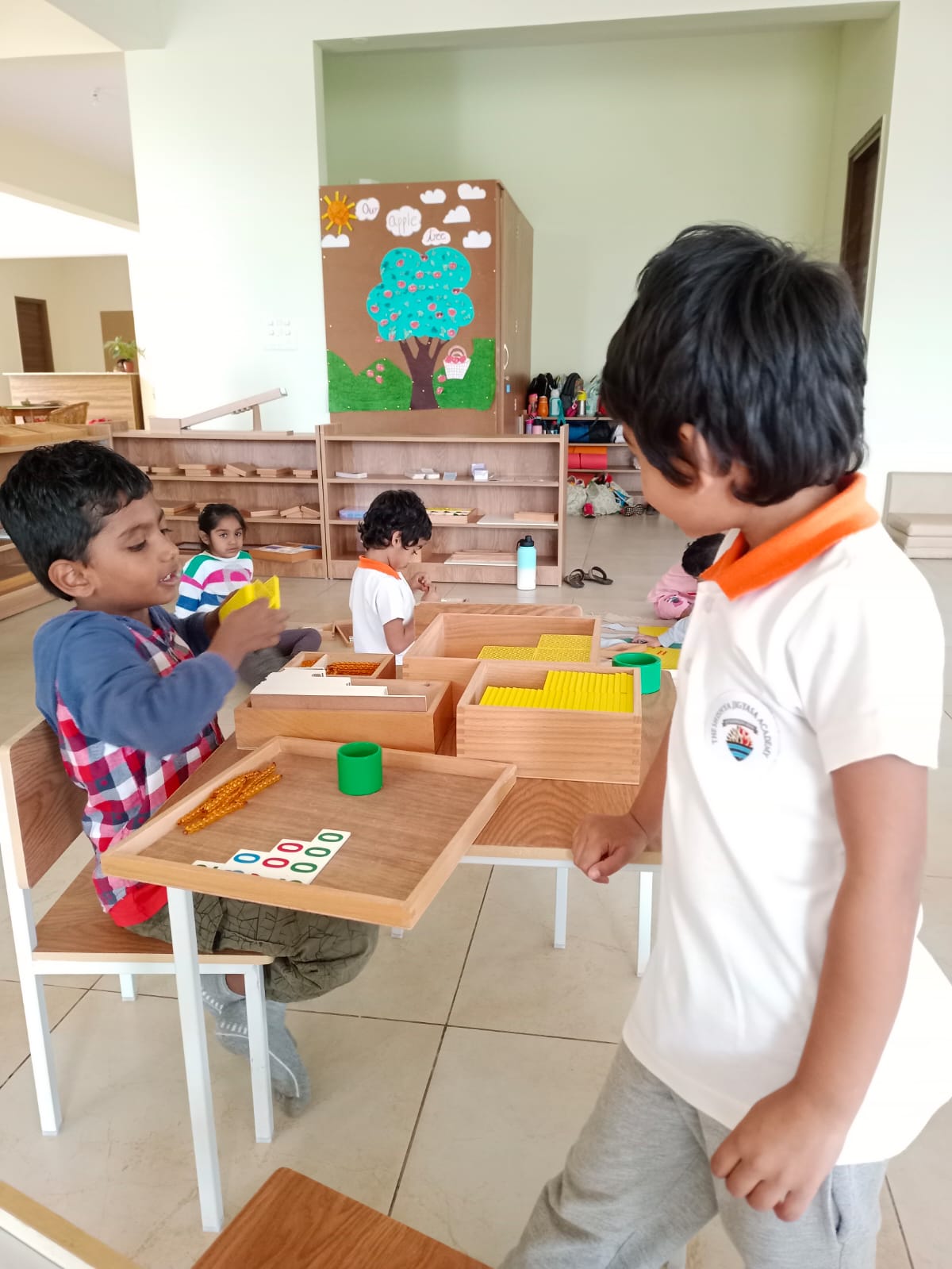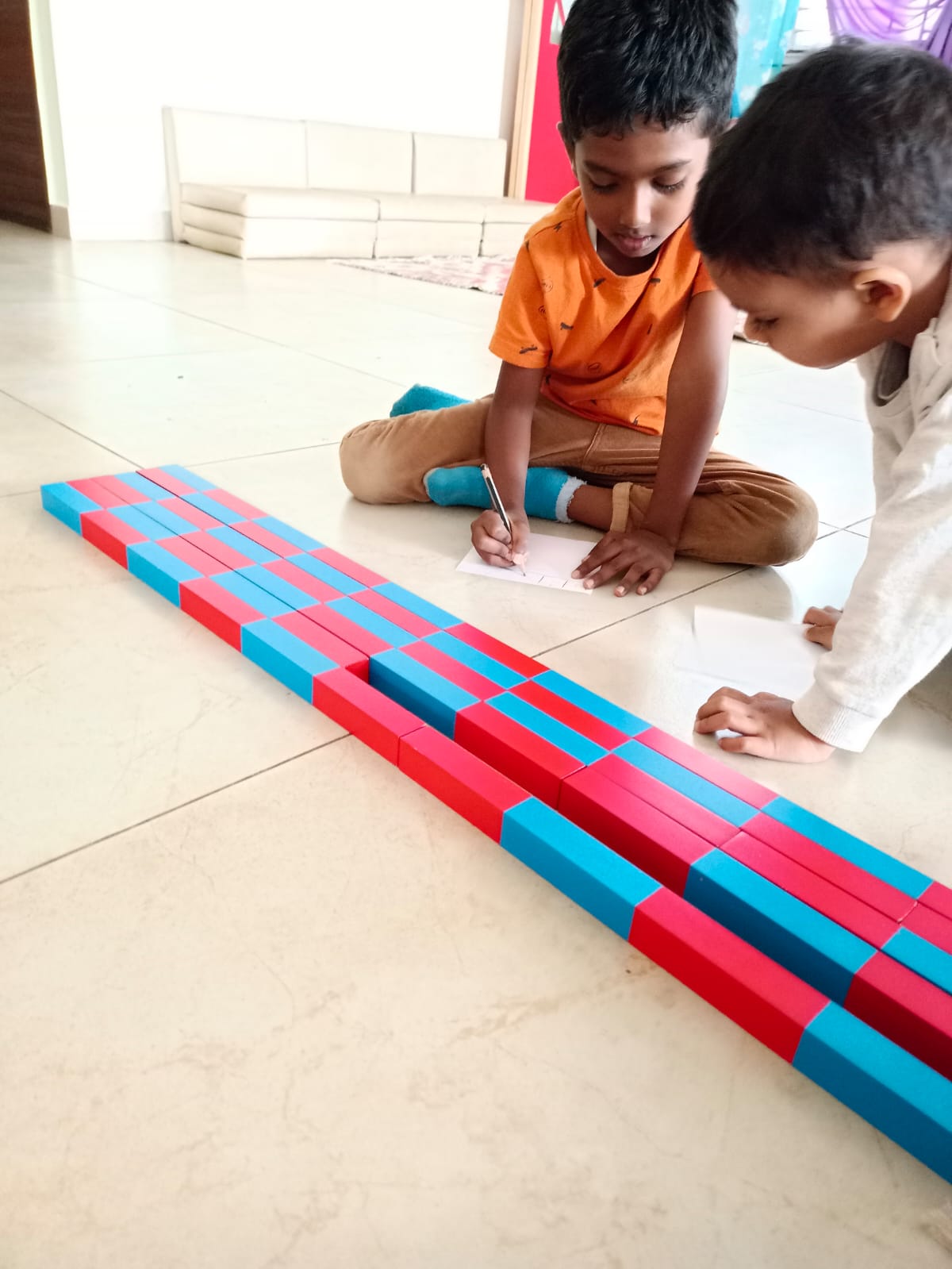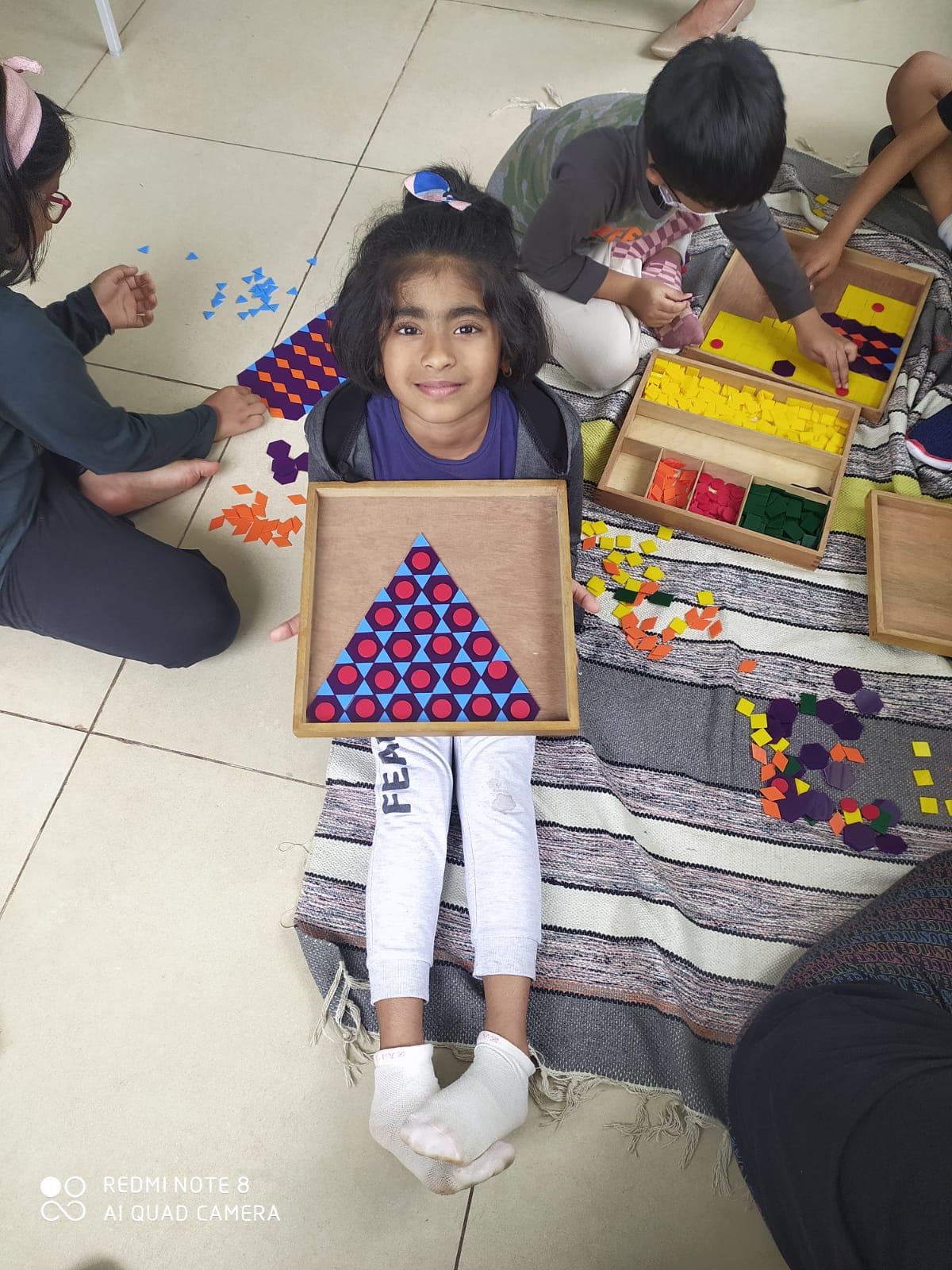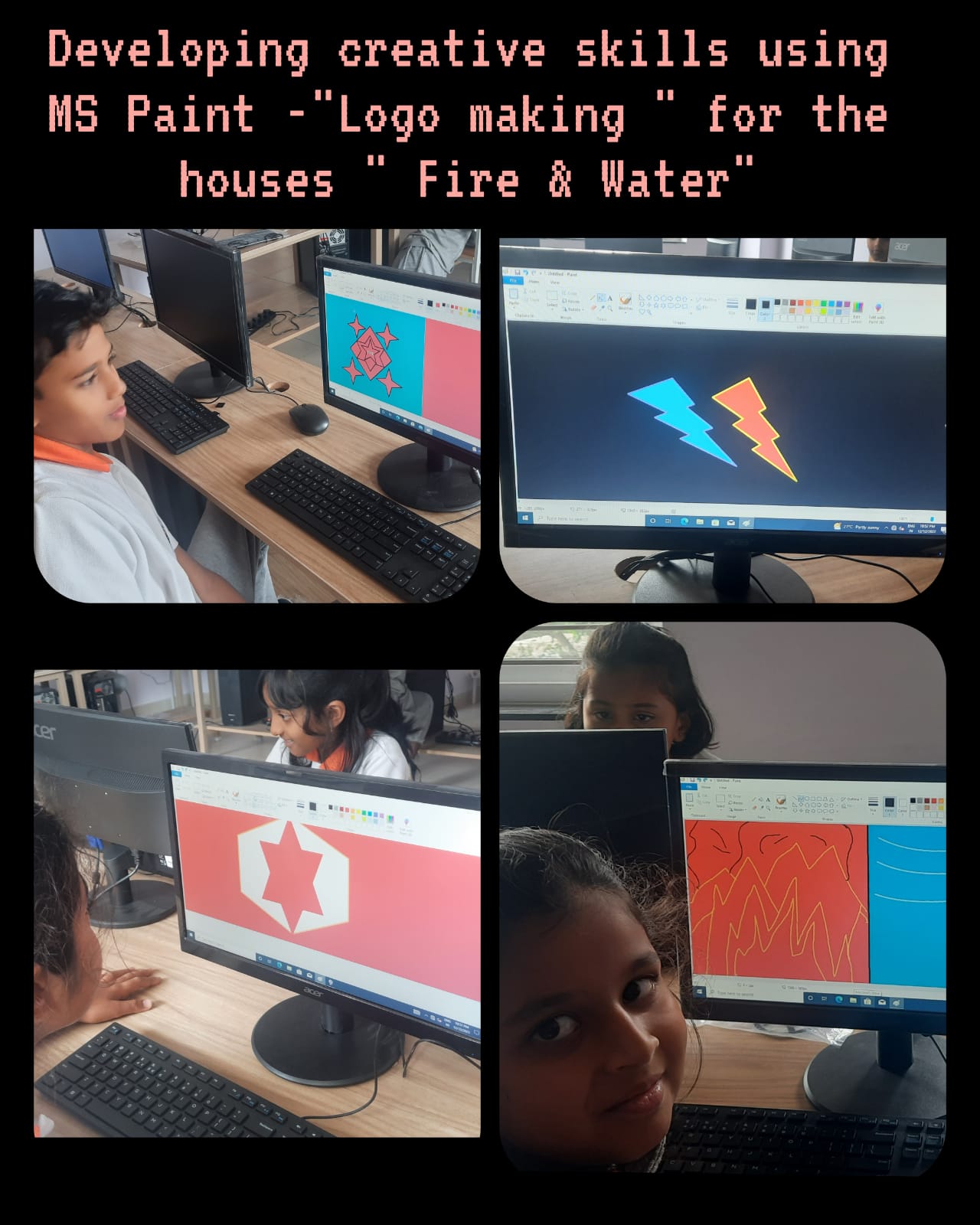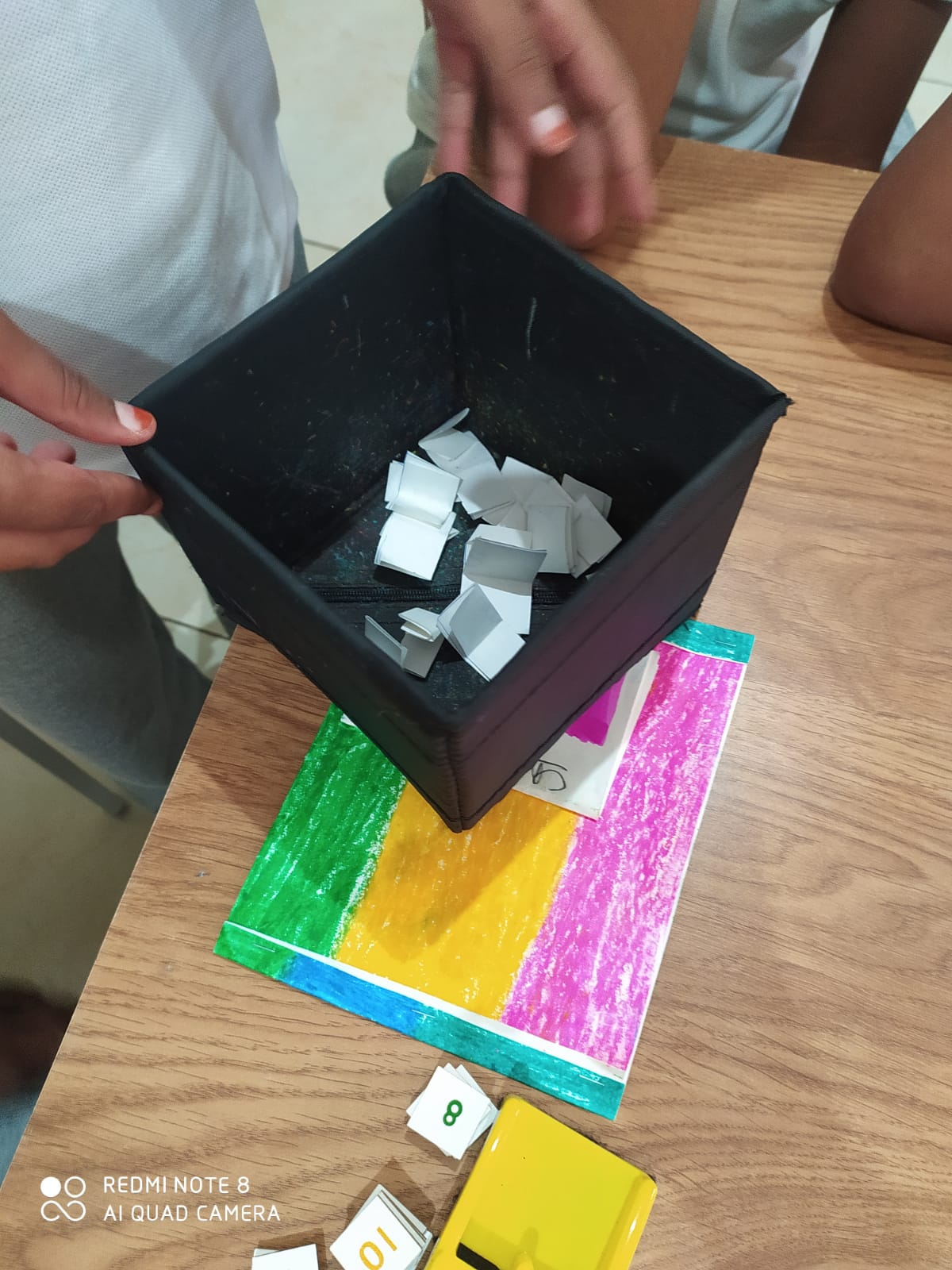Curriculum
The curriculum at the pre-primary and primary levels at The Shishya Jigyasa Academy combines the best practices from Montessori and Reggio Emilia philosophies with the Cambridge Curriculum. This integrated approach focuses on fostering holistic development and has been successfully implemented since 2013.
Key features include:
- Child-Centered Learning: Emphasizing individual interests and learning styles.
- Collaborative Projects: Promoting teamwork and communication skills.
- Creative Expression: Supporting artistic and imaginative development.
- Structured Framework: Aligning with the UK National Curriculum to ensure comprehensive educational standards.
This curriculum aims to cultivate a love for learning while ensuring a strong academic foundation.
Pre-primary:
At the Shishya Jigyasa Academy, we understand that little children’s education is not so much about teaching, as it is about providing limitless opportunities to learn. The curriculum has been carefully designed over many years of experience with little children, and has won numerous accolades. It is based on the UK Early Years Foundation Stage (EYFS) framework, and covers the following seven areas of development:
- Physical development
- Personal, social and emotional development
- Communication and Language development
- Literacy
- Development of the mathematical mind and reasoning skills
- Knowledge and Understanding of the World
- Development of Creative Thinking
The curriculum at Shishya Jigyasa is designed to support seven key areas of learning through unique programs:
- Multi-Sensory Explorers: Children engage their senses through carefully planned sensory experiences to enhance learning.
- Eager Listeners: Activities develop listening skills and phonics, laying a strong foundation for language and reading.
- Free Flow: Children follow their natural instincts, choosing activities that resonate with them, which fosters lifelong learning.
- Eurhythmics: Music and movement enhance balance, coordination, and understanding of concepts.
- World Travellers: Children learn about different cultures, promoting acceptance and global citizenship.
- Little Entrepreneurs: Role play helps children develop economic awareness through enjoyable experiences.
- Exploration and Discovery: Children explore their world, fostering curiosity and critical thinking.
The curriculum aligns with the principles of the 21st Century Learner, blending best practices from Reggio Emilia and Montessori methods. It emphasizes:
- Natural learning instincts and the need for control over learning.
- A rich environment that encourages hands-on experiences.
- Exploration of relationships with peers and materials.
- Multiple opportunities for self-expression.
Primary Lower Secondary Curriculum Overview (Grades 1–10)
The primary & lower secondary curriculum at The Shishya Jigyasa Academy is project-based and thematic, integrating cross-curricular concepts relevant to real-life situations.
Key Aspects:
- Art and Design: Encourages creativity by allowing children to create and discuss everyday objects, preparing them for a dynamic future.
- Experiential Learning: Focuses on learning through action and exploration. Semi-structured activities foster collaboration, communication, and teamwork, enabling students to take charge of their learning.
- Emphasis on Expression: Promotes various forms of expression—verbal, visual, musical, and dramatic—through specially designed programs that enhance creativity.
- Free Movement: Classrooms are designed as flexible learning spaces, allowing students to move and engage in self-initiated activities, facilitating collaborative learning and personal attention from teachers.
- Use of Technology: Technology is integrated as a supportive tool for learning, with smart boards and computers available for student use. While technology enhances education, the human touch of teachers remains essential.
Overall, the curriculum fosters a holistic educational experience, preparing students for future challenges.
Each theme culminates in a class project. This is time for children to apply what they have learnt through the 4- 6 week period. Projects may be planned as group or as individual projects, and all work is done by students in school facilitated by teachers. Teachers understand the need to give support while remaining in the background as the students use their skills for innovation and actualization of ideas. A key skill gained during projects is the ability to work cohesively with other people, a skill which is integral for success in the modern workplace.
